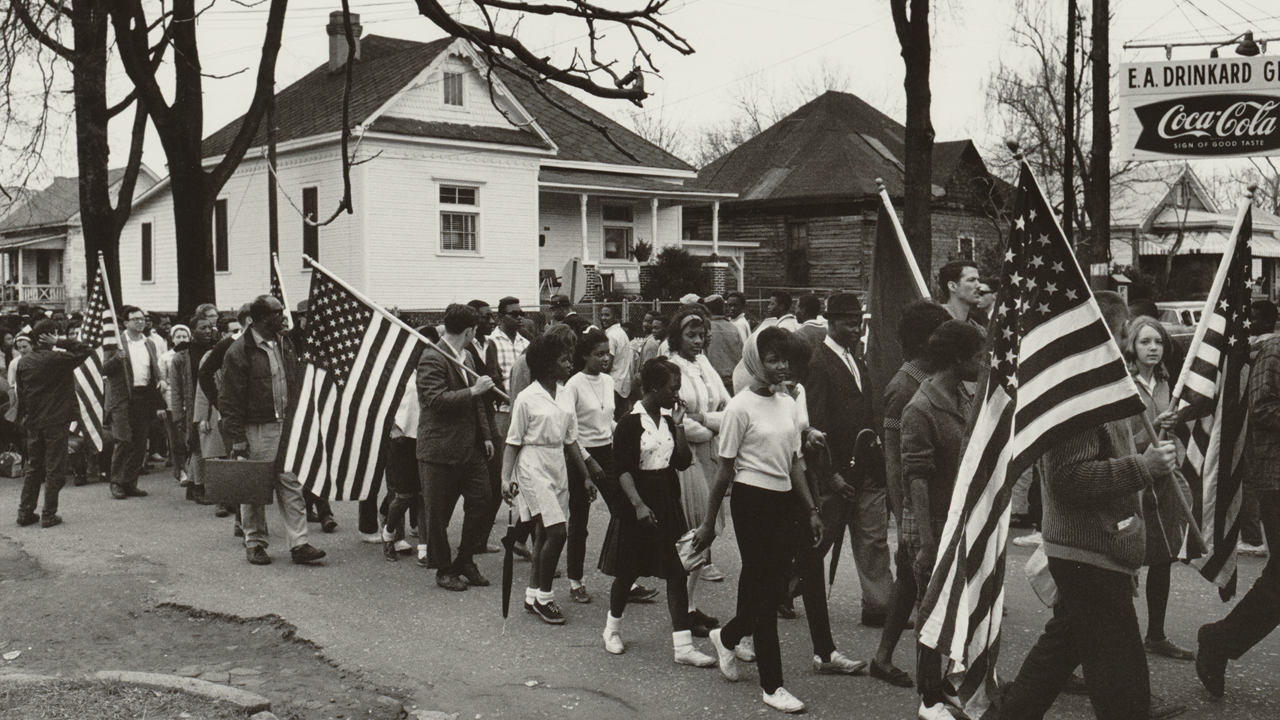
Peter Pettus, photographer. Courtesy of the Library of Congress, LC-DIG-ppmsca-08102
Participants marching in the civil rights march from Selma to Montgomery, Alabama, 1965.

GRADE LEVEL: High School
COMMON CORE STANDARDS: Reading, Writing, Speaking and Listening
In March 2015, we commemorate the 50th anniversary of the 1965 Selma to Montgomery March for Voting Rights, which led to the passing of the Voting Rights Act later that year. The anniversary provides a good opportunity to teach about activism and voting rights then and now.
After the enactment of the Civil Rights Act of 1964 which largely addressed racial discrimination and segregation, voting rights for African Americans remained difficult during that time, especially in the South. In the early 1960s, there had been a great deal of organizing and protesting around voting rights and in February 1965 the murder of civil rights activist Jimmie Lee Jackson by state troopers while he was participating in a peaceful voting rights protest led activists to organize a huge protest march from Selma to Montgomery, Alabama. The purpose of the march was to push for voting rights legislation. On March 15, President Johnson announced to a joint session of Congress that he would bring them an effective voting rights bill. The Voting Rights Act was signed into law on August 6, 1965.
This high school lesson will give students background information about the historical struggle for voting rights and the Selma to Montgomery March that took place in Alabama in March 1965. Students will also explore voting restrictions today and gain insight into what can and should be done to preserve the right to vote.